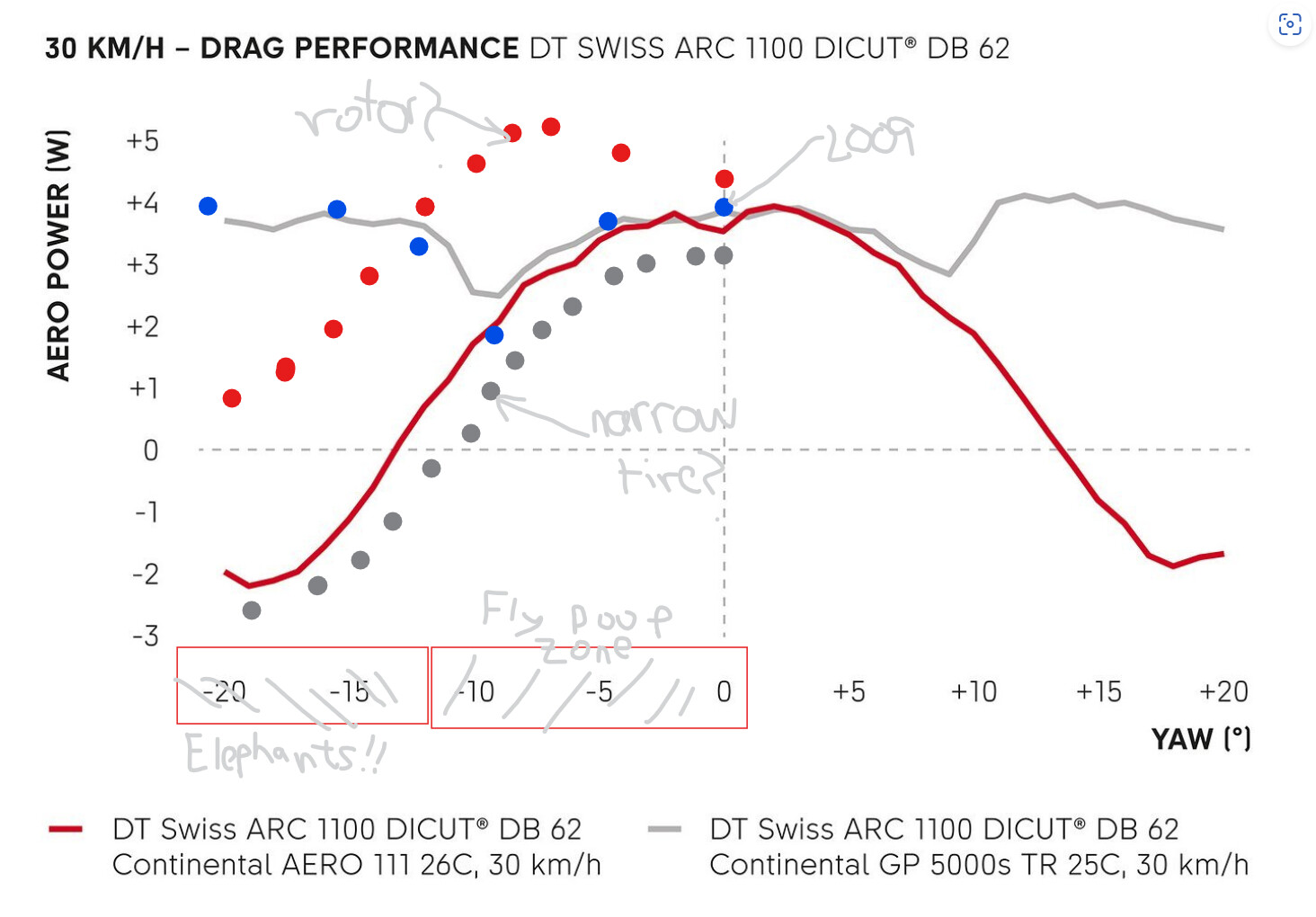Do their claims measured in a wind tunnel pan out in a turbulent environment. Ask Hambini what he thinks :-
Why? SwissSide are one of the few who take transient flow into account in their testing and no one has seen evidence that Hambini actually did any of the testing he claims to have done.
And when has lab rolling resistance testing not panned out on real asphalt? I.e. which fast CRR tire is slow on the road?
My point is CRR results on a real road vs a roller and drag results outdoor with a rider vs in a tunnel with unknow conditions (bike ?mannequin ?) can vary.
9 times out of 10, when I try to confirm manufacturer’s claims, I get different results. Maybe I am unlucky.
My thoughts on transient vs quasi-static:
IMHO (and that goes for this entire post), bicycles experience quasi-static flow conditions for the majority of their use. This is to say that the speed of the maneuvers (rocking/steering/leaning/pedalling etc.) occur too slowly for the flow to be considered truly dynamic in nature. The flowfield on the body has reached a quasi steady state before the orientation of the body can change yet again - a particle in the flow will pass over the entire length of the body before the body can change its orientation significantly.
If one wants math, the quantities of interest are t_hat (non dimensional maneuver time) and t_star (t_star = L/V → the time needed for the flow to pass over the body). In order for the flow to be considered dynamic, and thus yield wind tunnel testing in a static environment invalid, t_hat generally must be less than ~3 (if my memory serves me right).
t_hat = t/t_star=(t*V)/L
where t is maneuver time, V is flow speed, and L is the length scale (chord length of a fork blade, rim depth, torso length, leg diameter etc.).
For bike parts, I simply don’t think that maneuvers happen fast enough (nor are the length scales long enough) to make the quasi-static assumption break down - it is also assumed that beta angle sweeps in the tunnel are done for all cases one is trying to model. For the rider and her position, it becomes a possibility that the flow is on the verge of becoming fully dynamic (even then, I doubt it - though I don’t know for sure), and only than at the lower speeds and only for the torso length scale & not leg diameters.
I’m curious to hear what magnitudes you are trying to detect when you mention 9/10 times above? Picking the fly-sh!t out of the pepper is tough business! haha
This is on top of the fact that airflow coming onto the rider is mostly laminar or barely turbulent, unless you’re drafting. If you’re drafting aero doesn’t really matter that much. I expect real life conditions to be close to what we see in traditional tunnel testing. I also think they maybe injecting too much turbulence into the flow with what I’ve seen of transient setups they have in the tunnel, unless that’s shown in their worst case configurations.
It’s of course good to check if your designs fall apart in that regime, however it’s unlikely to have much of an effect on performance. I have a feeling that transient flow testing is more of a marketing tool than something very impactful.


